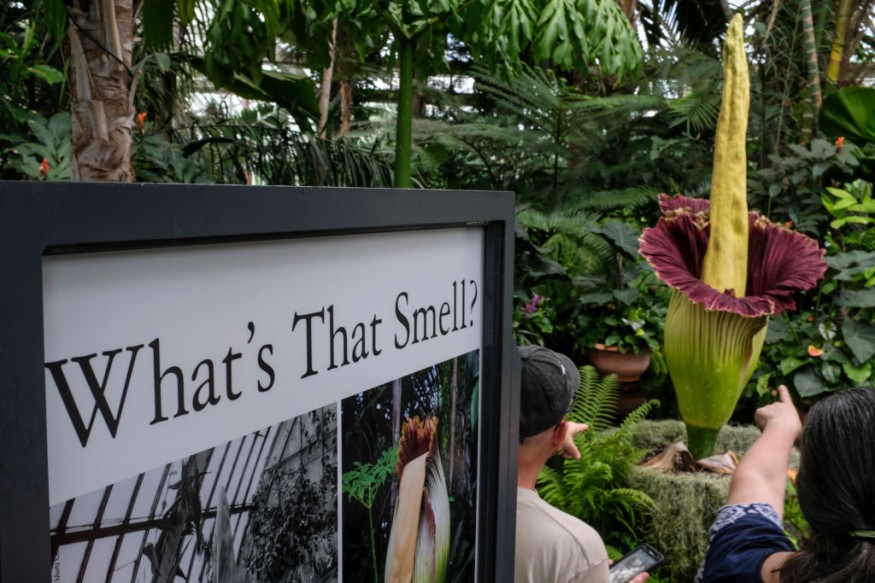
In a scene that looks straight out of a science-fiction movie, over a thousand spectators have gathered at an abandoned gas station in the San Francisco Bay Area to witness a giant flower come into bloom.
However, this flower is no daisy. On the contrary, it is the infamous corpse flower and said to be one of the most pungent flower species in the world.
Corpse flower pollination - A deathly affair
Much like the rafflesia, the corpse flower emits a powerful odor similar to the smell of rotting carcasses when it blooms. And just like its flatter, wider cousin, the corpse flower does this in order to attract flies and other insects for pollination.
Still, there are a lot of differences between the two. For one thing, rafflesias are parasitic and the largest species are generally found growing around trees in Indonesian forests. The corpse flower, on the other hand, has been successfully cultivated in a number of botanical gardens and by exotic plant collectors. (In fact, another one had also bloomed last year at the University of North Georgia.)
The same can be said for the one that has been drawing the attention of San Francisco suburbanites. Of course, raising these flowers to full bloom is still no easy task. The process takes at least a decade and it is one of the reasons why the sight one is still quite an occasion for many curious onlookers.
Fast facts about the corpse flower
1. It is not what it appears.
One would think the large, blooming bud is the flower part of this plant. But in reality, the red petals you see are actually more like leaves. In the wild, flies and other corpse-drawn insects are lured deeper into the plant to where it's real flowers are. These are small little buds of pungent pollen that catch on to insects, who then go to pollinate other corpse flowers in the forest.
2. You would not recognize it in its non-blooming form.
Those who have seen a corpse flower before it blooms might think that the growing, spike-like bud was how it always looked like. In reality, it looks radically different once the flower withers and its fruit has been picked. For it to bloom again, the flower first grows a surprisingly average set of stem and leaves. Regardless, this is part of how the flower once again gathers up energy via photosynthesis and prepares to bloom again after another ten years.
3. Its fruit could be dangerous.
Not much is really known about the corpse flower's fruit outside of its importance to researchers who want to keep the species alive. Still, it is also an interesting sight to behold, often colored in bright red and a sign for botanists to start preserving them for future cultivation. One thing is for certain though. Experts are wary about running tests due to the risk of the fruit being very fatal to creatures outside of birds that were native to its original, Indonesian habitat.
Sadly, despite their fame, wild corpse flowers are facing considerable threats due to deforestation and poaching. This is what spurs conservationists to vigilantly harvest seeds and pollen in every event that one blooms in captivity. And given the smell these plants give off when they do, their efforts are definitely commendable!
© 2025 NatureWorldNews.com All rights reserved. Do not reproduce without permission.





